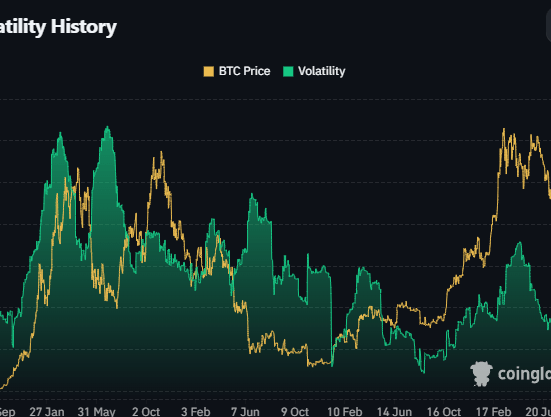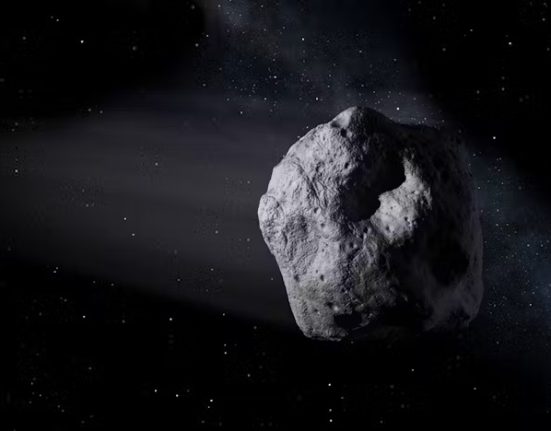Credit: NASA, ESA, CSA, STScI, Janice Lee (STScI), Thomas Williams (Oxford), PHANGS team
On a clear night with dark skies, you can just glimpse the Milky Way, a luminous arc stretching across the horizon. To the naked eye, its translucent clouds are simply beautiful splashes in the night, and their grandeur inspires hundreds of creation myths. But a telescope reveals subtle structures inside and outside the Milky Way that show how our galaxy and others formed, explain their evolution through cosmic time, and even hold clues to their fate.
A galaxy is a huge collection of gas, dust and huge amounts of stars and their solar systems, all bound together by their mutual gravity. Our own galaxy exists within a closely packed neighborhood of galaxies known as the Local Group. Out in the vastness of space, galaxies are arranged in filaments, clusters, and sheets, which form superstructures on an even larger scale.
Estimates of the number of galaxies in the universe Their mass ranges from 200 billion to 2 trillion. Dwarf galaxies can contain fewer than a thousand stars. At the other end of the mass spectrum, supergiant galaxies can encompass a hundred trillion stars orbiting the galactic center. The Milky Way also has a supermassive black hole at its core: Sagittarius A* (pronounced “A-star”).

The Milky Way above the Atacama Large Millimeter/submillimeter Array, above the European Southern Observatory in the Chilean Andes, a partner of the multi-facility Event Horizon Telescope. Inset: Sagittarius A* as seen through the Event Horizon Telescope.
Credit: ESO/José Francisco Salgado, EHT Collaboration
In terms of their structure, there are three types of galaxies: spiral, elliptical, and irregular. Scientists also classify galaxies based on the activity occurring in their core, such as a supermassive black hole. About 10% of known galaxies are active, meaning their luminous centers shine hundreds or thousands of times brighter than the combined light of their stars. These active galactic nuclei or quasars This is what happens when a supermassive black hole devours a large amount of matter. Jets of high-energy photons shoot out from the quasar's rotational poles and reach tens or hundreds of light years away in intergalactic space.
The Milky Way is not considered an active galaxy (at least not right now), but according to NASA it has likely experienced a “burst of activity” over the past few million years.
Spiral Galaxies
Spiral galaxies, the most common type of galaxy, have a bright, dense core of stars gathered in a central globe, from which two or more spiral arms extend into a wide, flat disk. Most have a supermassive black hole at their center (Sagittarius A* is about 4.3 million solar masses, a measurement that earned it the Nobel Prize in Physics in 2020).
Spiral galaxies often have roughly spherical halos, composed of gas, dust, old stars, star clusters, and dark matter—invisible material that neither emits nor reflects light but still exerts a gravitational pull on other matter. Star clusters form in stellar nurseries, gas- and dust-rich regions within the arms of a spiral galaxy, while older stars can be found throughout the disk and halo.
Spiral galaxies account for the vast majority of galaxies, outnumbering other types by no less than two to one; the Hubble project gives a conservative figure of 60%, while the highest population estimate from the Sloan Digital Sky Survey identified up to 77% of all galaxies as spiral galaxies.

Spiral galaxies, as seen by JWST. Glowing dust appears in shades of red and orange. Older stars are blue. Diffraction spikes indicate these galaxies may have active supermassive black holes at their centers.
Credit: NASA, ESA, CSA, STScI, Janice Lee and Elizabeth Wheatley (STScI), Thomas Williams (Oxford), PHANGS team
About two-thirds of spiral galaxies are barred spirals, in which the central disk extends out in a ribbon-like shape. The Milky Way belongs to this class, as does our nearest galactic neighbor, the Andromeda galaxy.
Elliptical Galaxies
Older and rarer than spiral galaxies, elliptical galaxies range in shape from long, narrow ovals to spheres. Unlike spirals, elliptical galaxies do not have much gas or dust in their environment and show little discernible organization or structure. Their component stars orbit the galactic core in random directions, leaving little of the gas needed to form new stars.
Honorable mention: Globular clusters
Globular clusters are often mentioned in conjunction with galaxies, so they deserve a special mention. A globular cluster can contain anywhere from tens of thousands to “many millions” of stars, and globular clusters are found in almost every galaxy. The Milky Way has no fewer than 157, but more globular clusters are thought to exist in the galaxy's innermost regions, which are shrouded in a veil of gas and dust that obscures the image.
Lenticular galaxies
Lenticular galaxies are a sort of cross between spirals and ellipticals. They have the central bulge and disk common to spiral galaxies, but lenticular galaxies do not have arms. However, like ellipticals, lenticular galaxies have older stellar populations and not much star formation is going on.
There are two main theories about how lenticular galaxies evolved. One suggests that these galaxies are late snapshots of older spiral galaxies whose arms have largely faded or dispersed. The other proposes that they are what's left over after spiral galaxy mergers, much like the fate that will eventually befall the Milky Way and Andromeda.

In September 2024, the James Webb Space Telescope captured this ongoing collision between an elliptical galaxy and a special type of spiral galaxy called a Seyfert galaxy, collectively known as Arp 107.
Credit: NASA, ESA, CSA, STScI
Irregular Galaxies
A surprising number of galaxies don't quite fit the spiral/elliptical archetypes. These strange and contradictory celestial objects can range in shape from teardrops to needles, hooks, and rings. They are not a special, exotic type of galaxy. Instead, many irregular galaxies are thought to be either edge-on spiral galaxies, distorted by gravitational lenses, or ancient elliptical galaxies disrupted by greater tidal forces.
On a cosmic scale
It's easy to feel small when looking at the Spine of the Night. Our solar system The Milky Way alone is three light-years wide, which is barely a rounding error compared to the galaxy as a whole. The Orion arm of the Milky Way in which we live is a thousand light-years thick from bottom to top and almost a hundred thousand light-years wide from edge to edge.

Webb's first Deep Field (2022) captured a galaxy cluster, SMACS 0723, in unprecedented detail. This image contains thousands of galaxies.
Credit: NASA, ESA, CSA and STScI
Galaxies are truly gigantic, but they are dwarfed by the larger-scale structures to which they belong. The Milky Way, Andromeda, and all of our respective satellites form a cluster known as the Local Group. The Local Group and hundreds of others like it form the Virgo Supercluster, which is itself one of four “lobes” of the Laniakea Supercluster: a cosmic structure of staggering size whose common gravitational center is known as the Great Attractor. With their combined mass of 10¹⁵ M☉, our Virgo Supercluster is perhaps 0.1% of the total mass of the complex, and yet the Great Attractor has a gravitational attraction This suggests a mass ten times greater than that of the entire Virgo Supercluster.
Laniakea and its neighbouring superclusters are constituent parts of the Pisces-Cetus supercluster complex, a gigantic filament nearly a billion light-years long. Galactic filaments are the largest known structures in the universe. The largest, known as the Hercules-Corona Borealis Great Wall, is thought to be ten billion light-years long.
Looking that far away means looking back in time. The most distant galaxies are often also the oldest, so the light we see today shows us an image of the galaxy as it was when the light was emitted, billions of years ago. The oldest ones appear to us today as they were just a few hundred million years later. The Big BangFor example, astronomers used JWST to identify CEERS J141946.36+525632.8, or “Maisie’s Galaxy,” which formed about 13.2 billion years ago, when the universe was just 390 million years old. Another distant galaxy, called GLASS-Z12, has a light-travel distance, or lookback time, of 13.6 billion years, meaning it formed no less than 13.6 billion years ago — well into the cosmic Dark Ages, before the reionization of the universe was complete. But because of the expansion of the universe, its current distance is about 33.2 billion light-years.
Redshift
The speed of light is a sort of universal speed limit, and if the universe began 13.8 billion years ago, then you might think that the visible universe could only be 13.8 billion years wide at most. But there's more to the story. Galaxies like GLASS-Z12 can be so far away because the universe itself is expanding. Scientists first discovered this because of a phenomenon called Doppler shift, or redshift. Light waves from approaching objects are compressed, making them appear shorter, and therefore “bluer” than they are. Objects moving away from an observer will become elongated and redshifted. The Z12 in GLASS-Z12's name describes its Doppler shift, or redshift.
In calculating the size of the visible universe, astronomers such as Edwin Hubble and Georges Lemaître discovered that light from distant galaxies was shifted toward the red, with an increase in wavelength corresponding to its distance from Earth. But if everything was expanding, where did it all begin? From that central question arose the idea of the Big Bang. Hubble, for his part, gave his name to a mathematical law describing the expansion of the universe and to the space telescope that corroborated his work.
Galaxies near and far are a favorite target for Hubble's spiritual and technological successor, the James Webb Space TelescopeBuilt to investigate (among other things) how galaxies form, grow, merge, and eventually fade away, JWST has set and broken record after record for the largest, oldest, and most distant galaxies ever discovered since its debut in 2021. Another of Webb’s key goals: verifying and refining astronomers’ models of dark matter and the Hubble constant, both key to the expansion of the universe. Cold dark matter may be invisible by normal methods, but it still has a gravitational pull. Invisible or not, if it’s there, JWST will find it.













Leave feedback about this